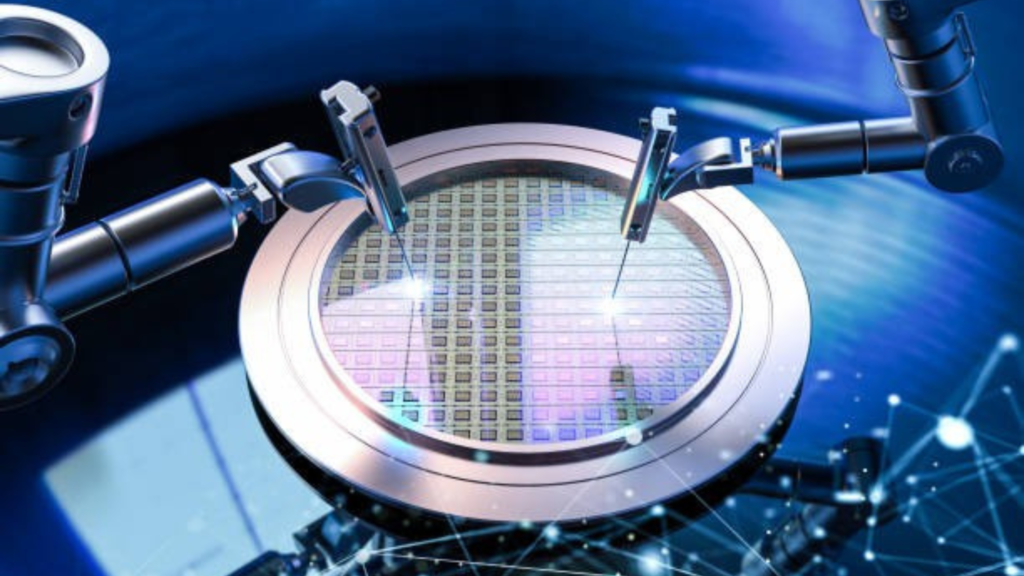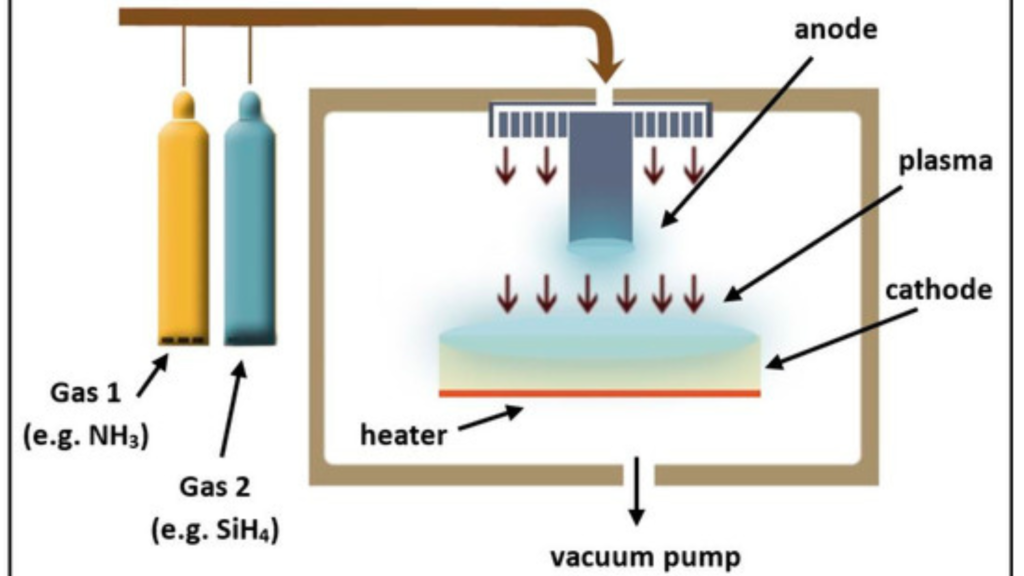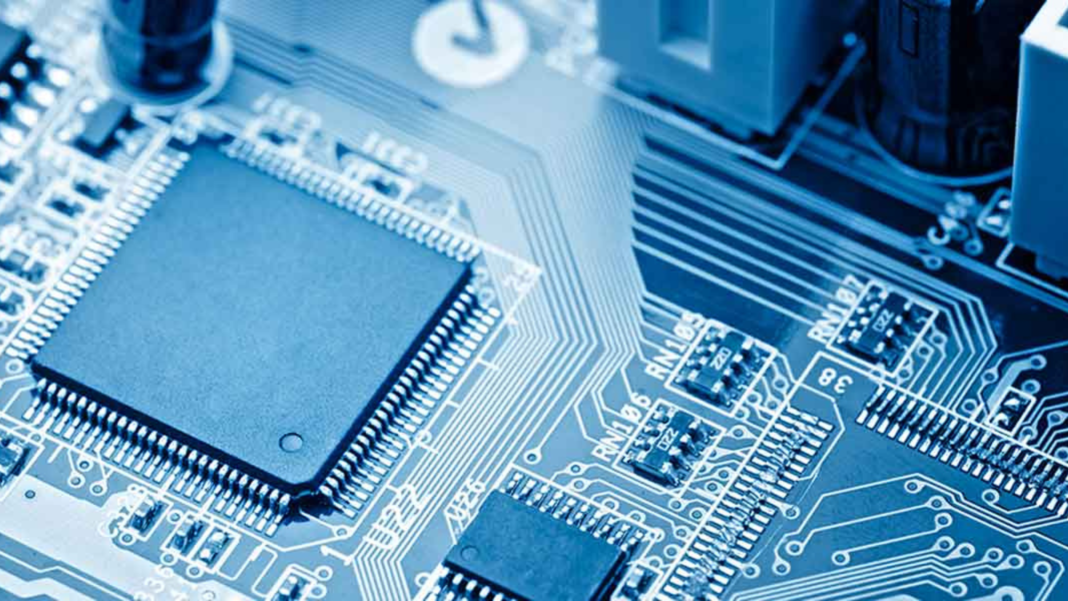In semiconductor manufacturing, gases are critical in producing high-quality and efficient electronic components. Two of the various gases used in this process stand out: ammonia and silane. In this blog post, we will explore the essential roles of ammonia and silane in semiconductor manufacturing, address safety considerations, discuss their environmental impact, and highlight recent advancements in gas usage.

Introduction: Gasses in Semiconductor
Semiconductor manufacturing is a complex and precise process that requires various gases to achieve optimal results. Gases such as ammonia and silane are indispensable in this industry, playing significant roles in specific steps of the manufacturing process.
The Role of Ammonia
Ammonia (NH3) is widely used in semiconductor manufacturing for its unique properties. It is primarily utilized in chemical vapor deposition (CVD) and plasma etching processes. Ammonia acts as a precursor in forming thin and uniform films on semiconductor wafers, ensuring the precise layering required to create intricate electronic components.
Ammonia also offers several benefits in semiconductor manufacturing, including excellent thermal stability, high reactivity, and low cost. Its applications range from the deposition of silicon nitride films to the creation of passivation layers and surface cleaning. However, handling ammonia with care is crucial because of its toxic and corrosive nature. Strict safety measures must be followed to ensure a safe working environment, including proper ventilation and personal protective equipment.
The Role of Silane
Silane (SiH4) is another vital gas used in semiconductor manufacturing. It is commonly used to grow epitaxial layers, which is crucial for fabricating advanced electronic devices. Silane gas reacts with the semiconductor substrate, allowing for controlled deposition and precise control over the film’s properties.
Silane offers several advantages in semiconductor manufacturing, including high purity, excellent film quality, and compatibility with various materials. Its applications include producing photovoltaic cells, thin-film transistors, and integrated circuits. As with ammonia, safety precautions are essential when working with silane due to its explosive nature. Proper handling, storage, and monitoring procedures must be followed to ensure personnel safety and the integrity of the manufacturing process.
Environmental Impact of Ammonia and Silane

While ammonia and silane play critical roles in semiconductor manufacturing, it is essential to address their environmental impact. Both gases can contribute to air pollution and pose health risks if not handled properly. However, the industry has made significant strides in implementing measures to minimize these impacts.
Manufacturers now focus on developing greener alternatives and adopting more sustainable practices. This includes using advanced gas abatement systems to capture and neutralize residual gases, investing in emission control technologies, and improving waste management procedures. These initiatives aim to mitigate the environmental risks associated with ammonia and silane usage while ensuring the continued advancement of semiconductor technology.
Recent Advancements in Gas Usage
The semiconductor industry is continuously evolving, and advancements in gas usage contribute to its progress. Researchers and engineers explore innovative techniques to enhance the manufacturing process’s efficiency, precision, and sustainability.
Advancements include the development of alternative gases with lower environmental impacts, such as nitrogen trifluoride (NF3), for plasma cleaning and deposition processes. Ongoing research is into improving gas delivery systems, enhancing process control, and optimizing gas consumption. These advancements pave the way for more efficient and environmentally conscious semiconductor manufacturing.
Conclusion
Ammonia and silane are invaluable in semiconductor manufacturing and essential in producing advanced electronic components. Understanding their applications, following strict safety protocols, and addressing their environmental impact is crucial for the industry’s progress.
As the semiconductor industry evolves, researchers, manufacturers, and environmental scientists collaborate to develop greener alternatives and implement sustainable practices. The semiconductor industry can thrive by prioritizing safety, ecological consciousness, and technological advancements while minimizing its environmental impact.
Ultimately, the roles of ammonia and silane in semiconductor manufacturing highlight the delicate balance between technological innovation and environmental stewardship. With ongoing advancements and a commitment to safety and sustainability, the industry can continue to push boundaries and shape the future of electronics.
Tips and Tricks for Semiconductor Manufacturing
Regarding semiconductor manufacturing, several tips and tricks can be adopted to enhance efficiency and safety.
Optimal Use of Gases
Ensure optimal use of gases like ammonia and silane by maintaining precise control over the gas flow rate. This can be achieved through advanced gas delivery systems, which improve efficiency and reduce wastage.
Implementation of Safety Protocols
Strict adherence to safety protocols is vital. Regular safety training and constant reinforcement of safety rules help create a safe working environment. Using personal protective equipment (PPE) is mandatory when dealing with hazardous gases.
Regular Equipment Maintenance
Regular maintenance of manufacturing equipment prevents downtime and promotes operational efficiency. This includes periodic inspection and servicing of gas delivery systems, control panels, and abatement systems.
Adoption of Sustainable Practices
Make sustainability a priority. This could include using alternative gases with lower environmental impact or investing in advanced abatement systems to capture and neutralize residual gases.
By following these tips and tricks, manufacturers can ensure the smooth running of operations while maintaining a commitment to safety and environmental sustainability.
Frequently Asked Questions (FAQs)
What are the primary gases used in semiconductor manufacturing?
Ammonia and silane are two commonly used gases vital to semiconductor manufacturing. They play significant roles in producing advanced electronic components like photovoltaic cells, thin-film transistors, and integrated circuits.
Why is it necessary to maintain precise control over the gas flow rate in semiconductor manufacturing?
Maintaining precise control over the gas flow rate ensures optimal use of gases, improves efficiency, and reduces wastage. This is particularly important when working with gases like ammonia and silane, critical in semiconductor manufacturing.
What precautions must be taken when dealing with hazardous gases like ammonia and silane?
Safety protocols must be strictly adhered to when dealing with hazardous gases. Regular safety training, reinforcement of safety rules, and mandatory use of personal protective equipment (PPE) are among the precautions that create a safe working environment.
How does regular maintenance of manufacturing equipment enhance operational efficiency?
Regular inspection and servicing of manufacturing equipment, including gas delivery systems, control panels, and abatement systems, can prevent downtime, thus promoting operational efficiency in semiconductor manufacturing.
How are sustainable practices incorporated into semiconductor manufacturing?
Sustainable practices in semiconductor manufacturing include:
- The use of alternative gases with lower environmental impact.
- Investing in advanced abatement systems to capture and neutralize residual gases.
- Improving waste management procedures.
Here are some previous articles.


